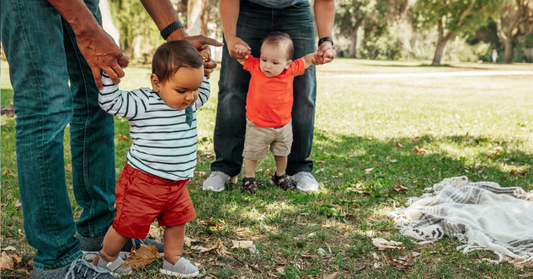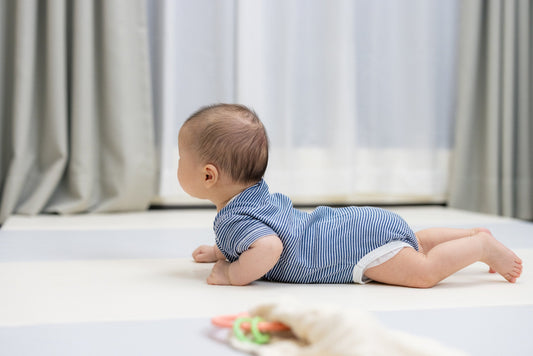Stacking up the Benefits of Stacking Toys

Stacking toys are more than just fun—they’re powerful learning tools that help children develop fine motor skills, hand-eye coordination, problem-solving abilities, spatial awareness, and creativity. Through building and toppling towers, kids explore early math and science concepts while also strengthening social and language skills during cooperative play.
Who doesn’t remember the thrill of building a tower just to watch it come crashing down? Whether it’s a pile of blocks, a stack of couch cushions, or a mountain of autumn leaves, that satisfying moment of collapse is a universal childhood joy. But beyond the laughter and squeals, stacking toys offer incredible developmental benefits for babies, toddlers, and even older kids.
In this article, we’ll explore both the science and the magic behind stacking toys, how they nurture essential skills, and ways you can make stacking time even richer for your child.
What Are Stacking Toys
Stacking toys are interactive play items designed for children to stack, nest, or arrange pieces in a specific order. Common examples include ring stackers, stacking cups, blocks, and nesting dolls. These toys have a long history—early versions were crafted from stones or wood, while today’s options include colorful rings, magnetic blocks, soft foam, and more. Regardless of the material or design, stacking toys tap into a universal childhood delight: the simple joy of building something up and then watching it tumble down.
Developmental Benefits of Stacking Toys
1. Fine Motor Skills & Hand-Eye Coordination
Stacking toys require children to grasp, lift, and precisely place each piece. This practice strengthens the small muscles in their hands and fingers, improving dexterity and hand-eye coordination. These skills are foundational for everyday tasks like writing, buttoning clothes, or using utensils.
2. Cognitive Growth: Problem-Solving & Critical Thinking
Every stack is a lesson in physics and logic: Will this block tip the tower? Can I balance one more? Through trial and error, children learn concepts like balance, gravity, cause and effect, and persistence. Each toppled tower is an opportunity to try again—building resilience, patience, and grit.
3. Spatial Awareness and Numeracy
Stacking introduces basic math and science concepts in a hands-on way. Kids quickly learn to judge sizes, heights, weights, and shapes. How many blocks make the tower as tall as the table? Which piece fits best on top? These experiences lay an early foundation for numeracy and spatial reasoning.
4. Creativity and Imagination
Stacking isn’t just about towers. With a little imagination, blocks become castles, bridges, rocket ships, or whatever your child can dream up. Open-ended stacking toys encourage creative play and self-expression, letting kids design their own worlds.
5. Language and Communication
As children play, they naturally describe what they’re doing and negotiate with playmates. “Let’s make it taller!” or “Put the red one on top!” These conversations build vocabulary, storytelling skills, and social confidence.
6. Social Skills: Cooperation and Teamwork
Stacking is even more fun together. Playing with siblings, friends, or parents teaches children how to share, take turns, plan together, and celebrate (or commiserate) as a team. Every joint tower is a lesson in cooperation and community.
Types of Stacking Toys
There are stacking toys to suit every taste and age:
- Wooden Blocks: Classic, durable, and endlessly versatile.
- Plastic Rings: Lightweight and easy for small hands, often in bright colors.
- Foam Blocks: Soft and safe for young children, simple to stack and toss.
- Fabric Blocks: Cuddly and gentle for babies, with fun patterns and textures.
- Magnetic Blocks: Snap together in creative ways, expanding building possibilities.
Mixing and matching different types—or adding household items like cups, bowls, or empty boxes—can keep play fresh and exciting.
Making the Most of Stacking Play: Tips for Parents
- Create a Safe, Spacious Play Area: Clear a spot on the floor or a sturdy table where towers can rise (and fall) without obstacles.
- Join the Fun: Build together, encourage experimentation, and share in the giggles when towers tumble.
- Challenge and Encourage: Nudge your child to reach higher or try new designs. Celebrate risk-taking and persistence.
- Add Variety: Mix in other objects from around the house—dominoes, pillows, containers—to inspire new stacking adventures.
- Turn Setbacks Into Smiles: When towers fall, model resilience by laughing and inviting your child to try again.
Conclusion
Stacking toys are more than just fun—they’re powerful tools for learning, growth, and connection. By nurturing fine motor skills, sparking creativity, and fostering social bonds, stacking play helps children build not only towers, but also confidence and lifelong skills.
So next time you see your child busily stacking and toppling, know that they’re not just playing—they’re learning, laughing, and growing with every block.
What’s your favorite stacking toy or memory? Share your stories below and keep on building!







0 комментарии